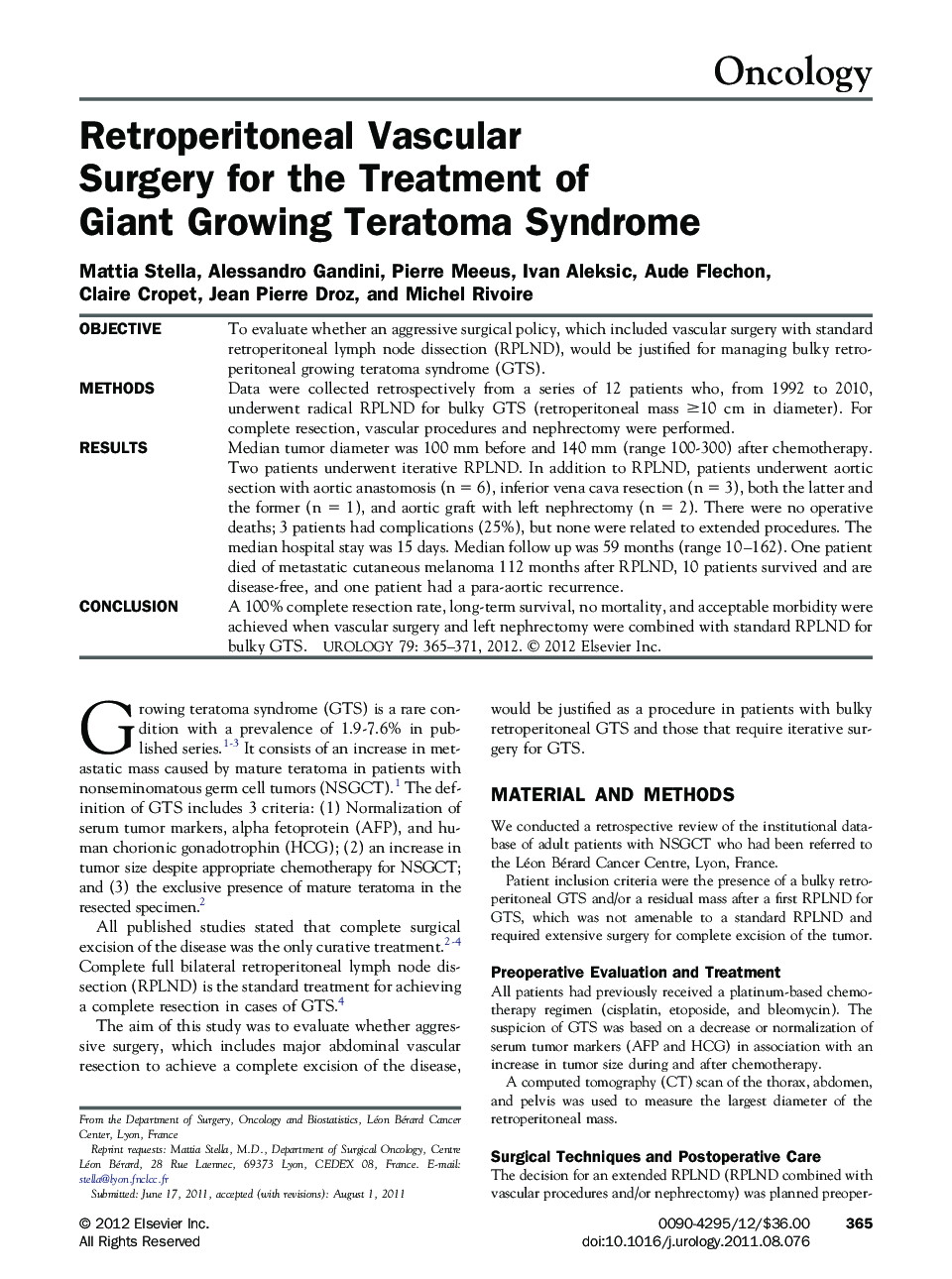| Article ID | Journal | Published Year | Pages | File Type |
|---|---|---|---|---|
| 3900479 | Urology | 2012 | 6 Pages |
ObjectiveTo evaluate whether an aggressive surgical policy, which included vascular surgery with standard retroperitoneal lymph node dissection (RPLND), would be justified for managing bulky retroperitoneal growing teratoma syndrome (GTS).MethodsData were collected retrospectively from a series of 12 patients who, from 1992 to 2010, underwent radical RPLND for bulky GTS (retroperitoneal mass ≥10 cm in diameter). For complete resection, vascular procedures and nephrectomy were performed.ResultsMedian tumor diameter was 100 mm before and 140 mm (range 100-300) after chemotherapy. Two patients underwent iterative RPLND. In addition to RPLND, patients underwent aortic section with aortic anastomosis (n = 6), inferior vena cava resection (n = 3), both the latter and the former (n = 1), and aortic graft with left nephrectomy (n = 2). There were no operative deaths; 3 patients had complications (25%), but none were related to extended procedures. The median hospital stay was 15 days. Median follow up was 59 months (range 10–162). One patient died of metastatic cutaneous melanoma 112 months after RPLND, 10 patients survived and are disease-free, and one patient had a para-aortic recurrence.ConclusionA 100% complete resection rate, long-term survival, no mortality, and acceptable morbidity were achieved when vascular surgery and left nephrectomy were combined with standard RPLND for bulky GTS.
